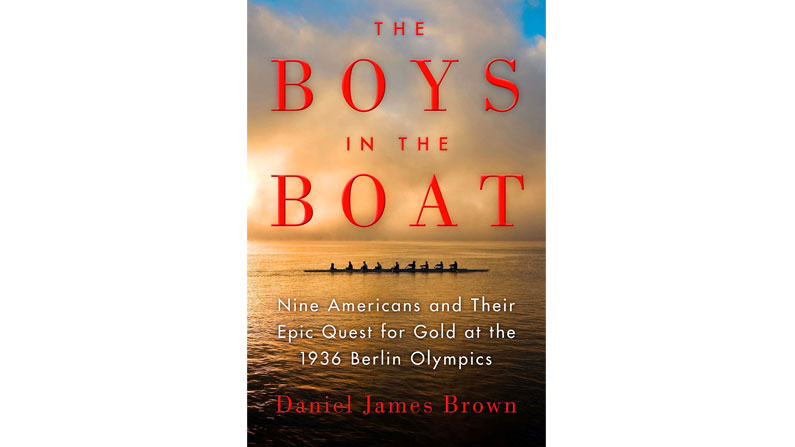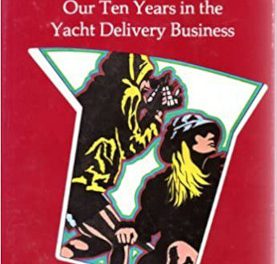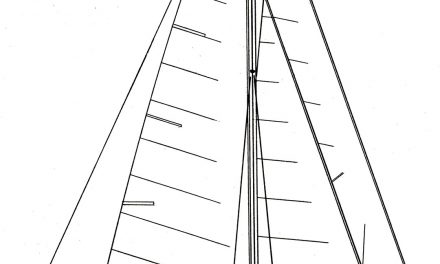 In this age of College Sports = Football = Big Business, it is hard to believe that crew — races between boats with two, four, or eight rowers—was one of the most popular collegiate sports in the 1930s. Thousands came out to watch the races, railroads with waterside tracks put on special trains to pace the boats, and the sports pages of the big newspapers scrutinized every word uttered by the coaches for hidden meanings. The American universities rowed against each other every year, and every four years the best crew represented the USA at the Olympics.
In this age of College Sports = Football = Big Business, it is hard to believe that crew — races between boats with two, four, or eight rowers—was one of the most popular collegiate sports in the 1930s. Thousands came out to watch the races, railroads with waterside tracks put on special trains to pace the boats, and the sports pages of the big newspapers scrutinized every word uttered by the coaches for hidden meanings. The American universities rowed against each other every year, and every four years the best crew represented the USA at the Olympics.
The Boys in the Boat tells the story of the University of Washington crew. These young men were not the scions of the rich from Harvard or Yale — they were the sons of lumberjacks, farmers, and small-town businessmen. They held part-time jobs to pay for their educations and trained in their spare time. And despite all the obstacles, they went to Berlin in 1936.
The story primarily follows Joe Rantz, who came to the University of Washington in 1933 and turned out to possess the skill set that made a champion rower. Although he is the central character in the book (author Daniel Brown interviewed him extensively), he insisted that the book be “not just about me. It has to be about the boat.”
The most marvelous part of the book is the description of how the coaches and rowers formed “the boat.” A crew is not a “team” — nine men in a shell are more than a team. They function as one entity—three-quarters of a ton of muscle and power, balanced in a cedar-wood shell 60 feet long and 2 feet wide, generating as much energy in six minutes as a basketball player does in two games played back-to back.
Two other men were part of the boat: the coxswain, Bobby Moch, who had to juggle water conditions, weather, what the other boats were doing, and his own crew, and assemble it all into split-second tactical decisions to win the race; and George Yeoman Pocock, an unassuming Englishman who sculpted wood into the best racing shells ever made. (In the 1936 qualifying races at Poughkeepsie, 17 of the 18 competing boats were made by Pocock.) He was a philosopher of rowing and his thoughts on the sport begin every chapter. The advice he gives Joe Rantz is critical to the final creation of the boat.
The book is not limited to the Washington crew. Brown did a tremendous amount of research into the families and neighbors of the rowers and the times they lived in. The chapters describing Nazi Germany, cleaned up for the Olympics, will remind readers of In the Garden of the Beasts and Voyages in Desperate Times.
The races were not all the boys had to contend with. Their opponents threw roadblocks in their way, which they overcame with the love of their families (paying their way to Germany) and their personal courage.
The accounts of the individual races are page-turners. Brown describes the thoughts and actions of the rowers, the coxswain, the coaches, the reporters, and the friends listening on radios at home in Washington as the races take place, all without a sentence wasted.
Daniel James Brown did a wonderful job in telling the story of ordinary young men who, in the depth of the Depression, formed an extraordinary entity. I guarantee you will read the account of the climactic race for Olympic gold against the five best crews in the world, with Hitler himself watching, in one sitting.
The Boys in the Boat: Nine Americans and Their Epic Quest for Gold at the 1936 Berlin Olympics by Daniel James Brown (Penguin Books, 2014, 416 pages)





